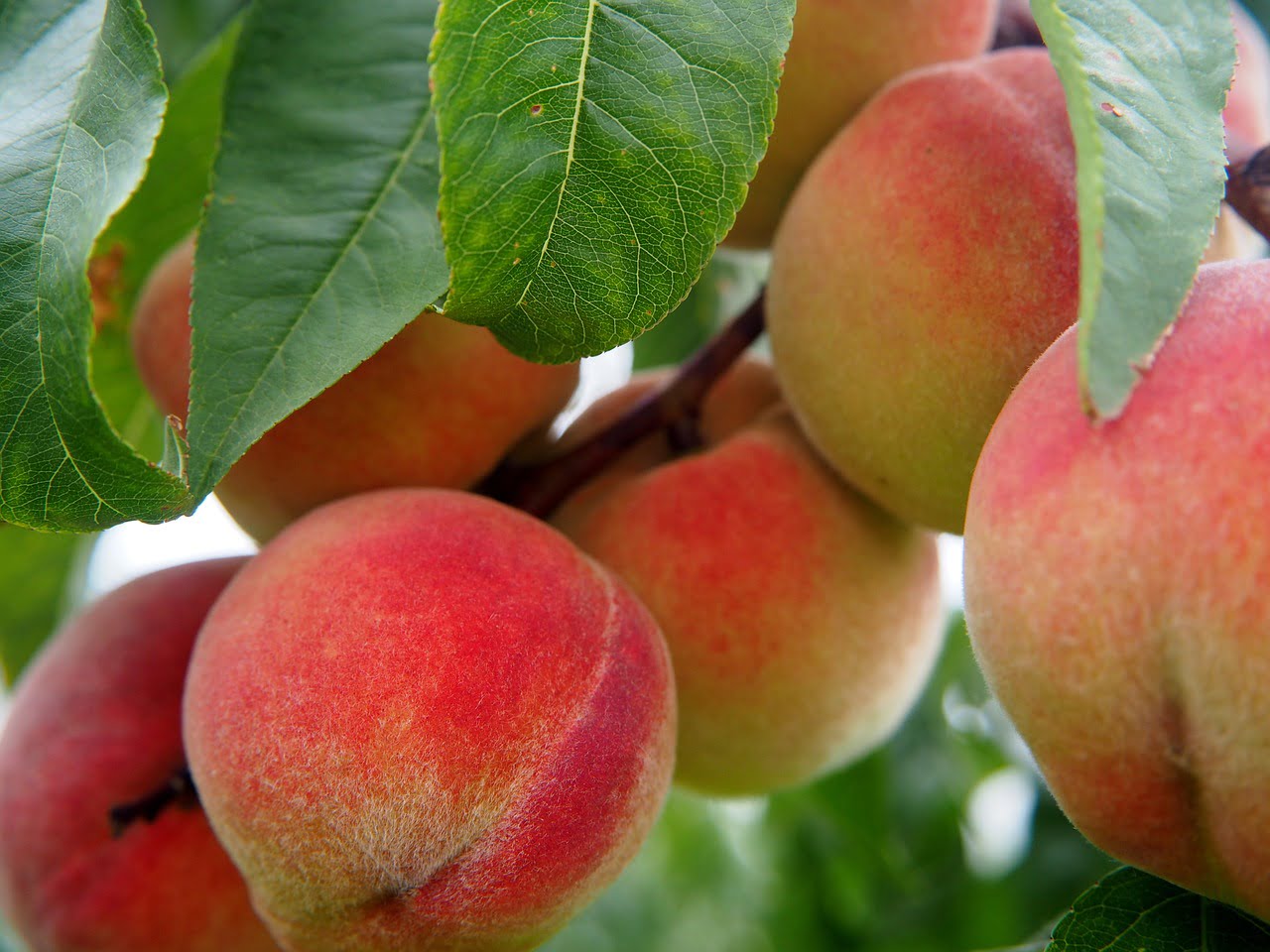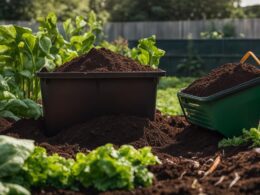Peaches have many health benefits. Besides their health benefits, they also taste delicious. But the price of store-bought peaches can sometimes be expensive, and peaches tend to be a fruit we treat ourselves to only once in a while. If you are interested in growing your own peach tree so that you can have a large harvest of peaches, read on. This article is all about peach tree care and maintenance. Hopefully you are inspired after reading this article to go plant your own peach tree. Let’s begin.
How to Plant Your Tree
First, find out what zone you live in. Peaches will grow in USDA zones 4 to 8. They do especially well in zones 6 and 7. You can find out your zone by clicking here. It is important to know what zone you live in, so that you know how and where to plant your peach tree. Make sure that where you live your peach tree will get at least six hours of sunlight daily during active growing.
Before you can begin caring for your peach tree, you must plant it. At least six months before planting a peach tree, have your soil tested to give yourself plenty of time to make changes as indicated by the results of the test. Once the soil is perfect for growing peach trees, buy the peach tree from a local nursery and ask for a rootstock that’s resistant to diseases and roundworms, as well as a tree that will produce the type and size of peaches you want. Select a tree that’s about a year old, 4 feet tall and 3/8 to 1/2 inch in diameter with a healthy root system. You probably won’t want a baby peach tree, since they can take a while to grow. Plant the peach tree in the spring as soon as the ground is unfrozen and you can dig up the soil. Make sure the site where you are planting your tree is in a sunny area with deep, well-drained, sandy-loamy soil with a slightly acidic pH of 6.0 to 6.5. Also, avoid planting your tree in sites where peach trees have been planted during the past five years.
Fertilizing Tips
After planting your peach tree, wait for about a week before you begin fertilizing. You’ll want to use fertilizer that contains 10 percent nitrogen, 10 percent phosphate and 10 percent potash, also called a 10-10-10 fertilizer. Scatter about 8 ounces of this fertilizer in a circle around the tree. Fertilize it from the dripline (outermost circumference of a tree canopy where water drips from and onto the ground) all the way to about 8 inches from the trunk. Fertilize your tree again in 7 weeks. In years 2 and 3, sprinkle 12 ounces of 10-10-10 fertilizer around the tree in early spring and again in late spring. For mature trees, ages 4 and up, increase the amount of 10-10-10 fertilizer to 16 ounces in early spring and again in late spring. Always keep fertilizer at least 8 inches away from the base of the tree and water it in thoroughly after fertilizing the tree.
How Much Water Your Peach Tree Needs
It is common for people to make the mistake of over-watering or not watering their fruit trees enough. Peach tree care requires learning how much water to give to your peach tree. After planting your peach tree, thoroughly soak the soil around the tree. Each week, apply about an inch of water during the tree’s first growing season. Mature peach trees need around 30 inches of water per year, or about an inch every 10 days. Use a soaker hose and water deeply when you water, to a depth of about 1 1/2 to 2 feet.
The Importance of Pruning Your Tree
All fruit trees need to be pruned in order for them to produce a large harvest of fruit. When you prune your peach tree, your tree will get more light, and you will be able to see the fruit more easily. But you may wonder, “How is pruning done?” Pruning trees is actually very simple. Prune the newly planted young peach tree with no side branches down to 2 to 2 1/2 feet above the ground. The following year before buds appear in late winter or early spring, prune the dormant tree for a V-shaped or open center by removing the central leader and all other branches, except for four lateral branches spaced evenly around the tree at about knee height from the ground.
For a mature peach tree, make clean diagonal cuts down to just above a bud, to prune off about 50 percent of the previous year’s fruiting wood while the tree is dormant in late winter or early spring. This encourages new growth and fruit production, and it improves air circulation and sun exposure. Later during spring, when the peaches have reached about the size of a penny, thin them to 6 inches apart to promote larger fruits and to reduce the weight the branches will eventually have to support. Throughout the life of the peach tree, prune it to maintain a convenient size so you can easily harvest and provide care. Continue to remove suckers or water sprouts arising from the roots, as well as dead, damaged, diseased, crossing or vertical branches.
Remember to sterilize your pruning tool with rubbing alcohol before and after pruning the peach tree. This will prevent your pruning tool from spreading a disease from tree to tree or, if you only have one tree, making your tree die from a certain disease.
How to Manage Pests
In order for you to manage pests, you must first try to prevent them. How is that done? Rake up and dispose any plant debris on the ground around your tree. Make sure you stop weeds from appearing by spreading 4- or 5-inches of organic mulch. Keep in mind that rodents may make a home out of mulch that is applied too thickly.
Common peach tree pests include Aphids, Lygus bugs, Stink bugs, Oriental Fruit Moths, Borers, Fall Webworms, Leafrollers, Nematodes, Plum Curculios, Scales, Tarnished Plant Bugs, Tent Caterpillars, and Thrips. To prevent these pests from appearing, you may want to spray a fruit tree spray around your tree. Bonide Fruit Tree Spray is a good option.
Tips for Taking Care of It During Cold Months
Peaches are extremely sensitive to frost. However, with proper care you can successfully grow a peach tree through the winter months. To prevent your tree from freezing, try choosing a later-blooming variety and plant it on the north side of a hill. Never plant a peach tree at the bottom of a hill, since there is a lot of cold air, on a windy hilltop, or on the south side of a hill, where it will likely bud earlier.
If you know that the first frost of the year is coming, water the soil around the tree to a depth of at least a foot. Temporarily remove the organic mulch and replace it with clear plastic mulch. Also, if you have a small peach tree cover it with a frost blanket until cold temperatures are out of the forecast.
Tips for Knowing When Your Peaches Are Ripe
Peach trees will start bearing fruit in 2 to 4 years, under normal growing conditions with proper peach tree maintenance, as well as peach tree care. You’ll know when the peaches are ripe when there are no more traces of green on the peaches, when gently squeezed it is not hard, and when it smells sweet and like a peach. Another easy way to tell if it is ripe is to pick one and taste a slice. If it is crunchy and not sweet, wait a few days before you harvest the rest of your peaches.
To pick your peaches, grasp a ripe peach gently in the palm of your hand to cradle it so it doesn’t bruise. Twist the peach gently while pulling it away from the branch. A ripe peach will break free from the tree easily. If the peach doesn’t come off the tree with a gentle tug, let it continue growing. Remember to always handle the fruit carefully to avoid bruising that could develop into spoilage. Once you pick your peaches, have fun making delicious recipes out of them.
Is White Peach Tree Care Different from Other Peach Tree Care?
You may have heard about the many different types of peaches. One of those types is the white peach. White peaches, unlike yellow peaches, have white flesh on the inside. Their skin appears the same color as other peaches, but their flesh color is what makes them unique. When planting your peach tree, you may have wondered, “Is there any specific white peach tree care that I should be following?” You’ll be happy to hear that all types of peaches, including white ones, will thrive under the peach tree care instructions that I gave you today.
Final Thoughts
Are you interested in growing your own peach trees? If so, hopefully you found this article to be helpful. Peaches will grow in USDA zones 4 to 8. They do especially well in zones 6 and 7 (find out your zone by clicking here). In this article I went over everything you need to know about peach tree care. I talked about how to plant your peach tree, how to apply fertilizer, how much water to water your peach tree, and how to properly prune your peach tree. I also went over tips for protecting your peach tree from pests, tips for helping your peach tree survive during the colder months, tips for knowing when the peaches are ripe, and how white peach tree care is the same as any peach tree care.













Thanks for the very helpful information about peach tree care. I was wondering though
why my Alberta peach tree’s leaves are turning yellowish and dropping to the ground.
Please help. Thanks.
Hy Rose,
One reason for that is that you may be underwatering your peach tree. Either that or overwatering. They are pretty picky and sensible when it comes to water.